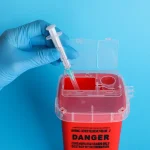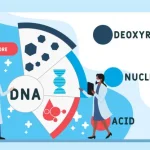Did you know a damaged bite or missing teeth can affect more than your appearance? It can impact chewing, speech, and even jaw comfort. Full mouth reconstruction, sometimes called a full mouth makeover or teeth reconstruction, offers a comprehensive path to rebuild your dental health and design a smile that works as well as it looks.
In this guide, you will learn how to:
•Define full mouth reconstruction and its primary goals
•Assess whether you are a good candidate for treatment
•Explore key procedures from crowns and veneers to implants and dentures
•Understand the overall treatment timeline, costs and financing options
•Discover advanced digital tools and tips for long-term maintenance
Let’s begin by exploring what full mouth reconstruction really means and how it differs from a simple smile makeover.
Continue your journey: This related article is worth your time.
Understanding Full Mouth Reconstruction
What Is Full Mouth Reconstruction?
Full mouth reconstruction, also called full mouth rehabilitation, teeth reconstruction, or dental reconstruction surgery, restores all teeth in both the upper and lower jaws. This comprehensive approach addresses severe decay, advanced gum disease, tooth loss, misalignment, and bite problems. By combining restorative and cosmetic methods, clinicians rebuild a patient’s complete dental structure and function.
How It Differs from a Smile Makeover
A smile makeover focuses on cosmetic enhancements such as whitening and porcelain veneers. Full mouth reconstruction goes beyond appearance to reestablish proper occlusion, chewing function, and oral health. While a makeover improves visible aspects, reconstruction resolves underlying structural and health issues.
Goals of Full Mouth Reconstruction
Function
•Restore proper bite alignment
•Improve chewing efficiency
•Alleviate chronic jaw pain and TMJ disorders
Aesthetics
•Design a harmonious, natural smile
•Custom-craft crowns and veneers to match shape, size, and color
Health
•Treat periodontal disease and infections
•Promote gum and bone health with supportive therapies
•Prepare stable foundations via bone grafting when needed
Are You a Candidate? Assessing Your Smile Needs
Determining if full mouth reconstruction is right for you starts with identifying key issues affecting your oral health and function.
Candidacy Criteria
Candidates often present one or more of the following:
•Multiple missing or severely decayed teeth
•Worn enamel and dentin from bruxism or erosion
•Advanced gum disease with inflammation or bone loss
•Bite misalignment causing chronic jaw pain or headaches
•Congenital defects such as malformed or absent teeth
Initial Evaluation Process
Your dentist begins with a comprehensive consultation to review medical and dental history. A clinical exam inspects teeth, gums, jaw, and facial structure. Radiographic imaging (X-rays) detects decay, fractures, and bone levels. Digital impressions and clinical photographs guide prosthetic design and aesthetic planning. Finally, you discuss goals and concerns to create a personalized treatment plan that restores function, health, and a harmonious smile.
This evaluation sets the stage for the restoration procedures and components that make up a full mouth reconstruction.
Restoration Procedures & Components
Full mouth reconstruction combines multiple restorative elements to rebuild function, health, and aesthetics. Each component is customized based on your oral condition and treatment goals. Below are the key procedures and materials commonly used.
Veneers
Porcelain veneers are ultra-thin shells bonded to tooth fronts. They correct:
•Discoloration or staining
•Minor gaps and chips
•Shape and length discrepancies
These custom veneers are layered with ceramic materials to mimic natural translucency and color.
Crowns
All-ceramic or porcelain-fused-to-metal crowns cover damaged or weakened teeth. They:
•Restore chewing strength
•Protect from further decay or fracture
•Blend seamlessly with nearby teeth
Crowns are fabricated using CAD/CAM or traditional methods to match your bite and smile design.
Dental Implants
A dental implant system has three parts: a titanium fixture, an abutment, and a crown. Implants support single teeth or full arches with long-term stability.
Single Implants
•Replace one missing tooth
•Preserve bone and maintain adjacent teeth
Full-Arch Implants
•Anchor a bridge or denture across an entire jaw
•Offer better support than removable options
All-on-X
A fixed prosthesis is secured to four or more implants in one arch, providing immediate function and high patient satisfaction.
Dentures
Removable dentures and implant-retained prostheses restore multiple missing teeth. Key features:
•Flexible acrylic or nylon bases
•Precision attachments for implant support
•Easy removal for cleaning
Implant-retained dentures improve stability and chewing efficiency compared to traditional removable appliances.
Orthodontics
Pre-prosthetic alignment ensures optimal fit of restorations.
Braces
•Metal or ceramic brackets and wires guide teeth into ideal positions
Invisalign
•Clear aligners move teeth incrementally with fewer office visits and improved comfort
Periodontal Care
Healthy gums and bone are essential for lasting restorations. Periodontal procedures include:
•Scaling and root planing to remove bacterial buildup
•Soft-tissue grafting for gum recession
•Guided tissue regeneration to rebuild bone support
Regular maintenance visits help preserve periodontal health and protect your investment in restorative dentistry.
Treatment Process & Timeline
Consultation & Digital Planning
Your journey begins with a comprehensive exam of the mouth, head, and neck. Your dentist reviews medical history, goals, and takes X-rays, photographs, and 3D scans. These tools shape a detailed roadmap outlining each procedure’s sequence and a preliminary timeline.
Preparatory Therapies
First, gums are treated with scaling and root planing to ensure a healthy foundation. If needed, orthodontic alignment with braces or clear aligners corrects bite issues. Healing times range from four weeks for soft tissue to several months for tooth movement.
Surgical & Provisional Phase
Implants, bone grafts, and sinus lifts are scheduled next. Provisional restorations are placed to maintain function and appearance during the 3 to 6 month healing period for osseointegration.
Final Prostheses Delivery
Once tissues have healed, custom crowns, bridges, or dentures are milled with CAD/CAM technology. The final fitting restores full chewing function and a balanced smile. The entire process typically takes six to nine months, depending on treatment complexity and individual healing.
Cost, Pricing & Financing
Patients often ask about restoration teeth cost, teeth restoration price, and overall dental restoration costs. When evaluating full mouth reconstruction prices, consider several factors that shape the total investment.
Key Cost Factors
•Material choice: composite resins and acrylics cost less than porcelain, zirconia, or gold alloys
•Treatment scope: the number of implants, crowns, or bridges needed
•Geographic location: urban practices often charge more than suburban or rural clinics
•Surgical complexity: bone grafting or sinus lifts add to fees
•Diagnostic fees: panoramic X-rays, CBCT scans, and digital impressions
Typical Price Ranges
Understanding teeth restoration price and dental restoration price helps plan your budget. Typical ranges include:
•Dental crowns: $500 to $3,000 per tooth. The cost of full mouth crowns depends on material and lab complexity.
•Single implants: $1,500 to $6,500 each, a key component in dental reconstruction surgery
•Fixed bridges: $1,000 to $3,000 per unit
•Bone grafting: $300 to $3,000 depending on site and material
•Diagnostics: $200 to $1,200 for imaging and scans
Full-Arch Solutions
A moderate reconstruction with eight implants and twelve crowns averages around $45,000. Extensive cases involving 14 implants, bone grafts, and veneers can approach $95,000.
Financing Options
Most dental plans cover 50% to 80% of restorative work, subject to annual limits. After insurance, out-of-pocket costs often range from $5,000 to $60,000. Financing options include healthcare credit cards with 0% APR promotions, in-office plans over 6 to 24 months, and third-party medical loans. Talk to your provider to find a plan that fits your budget.
Innovations & Advanced Technologies
Digital Smile Design & Virtual Preview
Digital Smile Design combines intraoral scans, 3D modeling, and cone beam CT data to create a virtual mockup of your future smile. Patients and dentists can adjust tooth shape, alignment, and shade before treatment begins, reducing chair time and surprises.
3D Printing & CAD/CAM Fabrication
Integrating CAD/CAM milling with additive manufacturing yields accurate models, provisional prostheses, and custom guides. Studies show 3D printed PMMA and milled restorations offer comparable fit, while printing reduces material waste and speeds production of temporaries.
Multidisciplinary Team Approach
An in-house team of prosthodontists, oral surgeons, and lab technicians, supported by a dedicated dental laboratory, streamlines workflows. Close collaboration ensures seamless handoffs, consistent outcomes, and consolidated appointment schedules.
Flexible Financing Models
Tailored payment plans and healthcare credit options make advanced reconstructions more accessible. Flexible terms help patients start treatment without compromising on cutting-edge technology.
Aftercare, Maintenance & Longevity
Oral Hygiene Routine
Brush twice daily with a soft-bristle brush. Floss around implants and under bridges daily. Use interdental brushes or water flossers to clean hard-to-reach areas.
Follow-Up Visits
Schedule professional exams every 3 to 6 months. Your dentist will assess tissue health, check occlusion, and polish restorations.
Warranties & Support
Many practices offer one- to five-year warranties on crowns and implants. Register your prosthetics and report any issues promptly to maintain coverage.
Tips for Longevity
Avoid hard foods and tobacco. Wear a nightguard if you grind. Maintain a balanced diet and hydration to support gum health. Consistent home care and lifestyle choices greatly influence the lifespan of your restorations.
Conclusion
Full mouth reconstruction offers a path to reshape your smile, restore chewing function, jaw comfort, and long-term oral health. By understanding each phase, from evaluation and planning to advanced procedures and aftercare, you can make informed decisions and set clear expectations for your journey.
Key takeaways:
•Comprehensive evaluation pinpoints decay, bite issues, and gum health needs
•A mix of veneers, crowns, implants, dentures, orthodontics, and periodontal care rebuilds form and function
•Digital planning and 3D fabrication enhance precision and patient experience
•Typical treatment spans six to nine months, with financing options to suit many budgets
•Consistent home care and regular dental visits extend the life of your restorations
With this guide, you have the knowledge to discuss full mouth reconstruction options confidently. Speak with a qualified dental team to map out a personalized treatment plan, understand restoration teeth cost and full mouth reconstruction prices. Your new smile, one that looks natural and supports your overall well-being, is within reach. Take the first step today toward a balanced, functional, and confident smile.
If you enjoyed this post, you’ll love what’s featured on 2A Magazine.







